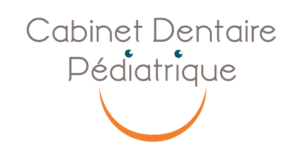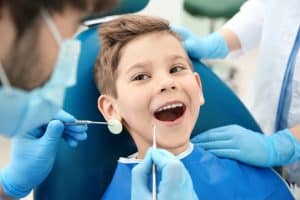To soothe, comfort and reassure the baby, a large majority of parents use pacifiers. Although useful, in the medium and long term, the pacifier can cause complications during the child's maxillofacial growth. All the more so if the child persists in using it after the age of 2 or 3.
Early childhood professionals have therefore developed so-called orthodontic pacifiers, which would help preserve the orthodontic capital of young children.
In this article, we present you the specificities of an orthodontic pacifier compared to a traditional pacifier and if it is really effective.
What is an orthodontic pacifier?
This innovation, which was introduced a few years ago, is called "orthodontic" because it has both a preventive and corrective function.
The composition and ergonomics of an orthodontic pacifier have been designed to allow the child's teeth to grow properly while maintaining the reassuring appearance of a traditional pacifier.
Depending on the manufacturer, you can choose between several orthodontic teats according to the age of the child or by color. Some even offer cases to disinfect the teat and prevent the proliferation of bacteria.
However, underneath its appearance of being a good alternative to the traditional pacifier, the orthodontic pacifier has some serious drawbacks.
Orthodontic teat VS traditional teat
Orthodontic pacifier: a false good idea
Unlike a traditional pacifier, the orthodontic pacifier was designed to prevent orthodontic deformities. Its ergonomics have been thought to favor the good oral development of the child and avoid the deformation of the teeth.
It has enough space for the tongue to position itself in the best possible way. It would be designed to allow a better distribution of the pressure to avoid deformations of the palate.
However, several studies have shown that orthodontic pacifiers are not without consequences on the deformation of the palate and teeth. There are many pacifiers on the market with the name "orthodontic". However, this mention is not controlled and many products do not have the virtues they claim.
So-called orthodontic pacifiers can cause many problems for the proper development of the palate and teeth:
- Long-term palate deformation,
- Wrong position of the tongue,
- Teeth that grow too far forward or backward.
The advantages of physiological soothers are minor compared to the use of conventional soothers. There is no pacifier on the market that is completely satisfactory from an orthodontic point of view.
The orthodontic pacifier is therefore recommended to replace a classic pacifier or the thumb, which have more important consequences on the good development of teeth. But its use must be thoughtful and punctual to preserve the orthodontic health of children. There are many many tips to get your child to stop using pacifiers.
Pacifier-related problems
Nearly 80 % of parents buy pacifiers for their children, and they are not safe for palate and tooth development.
Prolonged use of the pacifier will tend to interfere with the development of the child's mouth. As soon as the first milk teeth appear and after 3 years of age, your child may be confronted with :
- Dental problems: teeth that pull forward or backwards, presence of cavities, damaged, deformed or too wide apart teeth,
- Poor positioning of the jaw: dental gap, crossbite, etc.
- A malformation of the palate with a hollowed out arch of the palate,
- Chronic nasal obstruction due to mouth breathing,
- Allergic or chronic rhinitis,
- A bad placement of the tongue.
These situations can have indirect consequences on the daily life and health of the child. These oral and dental problems caused by the pacifier can lead to chewing difficulties, poor digestion, or pronunciation problems.
Although the orthodontic pacifier is a healthier alternative to the traditional pacifier, it is still recommended that the child stop using it around 3 years old. If orthodontic pacifiers are used over a long period of time, they can lead to habituation of the child and problems with palate position.
Frequently asked questions about the orthodontic pacifier
An orthodontic pacifier helps prevent malpositioning of baby teeth and orthodontic deformities.
Yes and no. An orthodontic pacifier can have a negative effect on the development of the palate and teeth. It may be recommended by the dentist if your child's pacifier or thumb is causing even more harm than an orthodontic pacifier.
Like a regular pacifier, it is recommended that your child stop using pacifiers before the age of 3.


